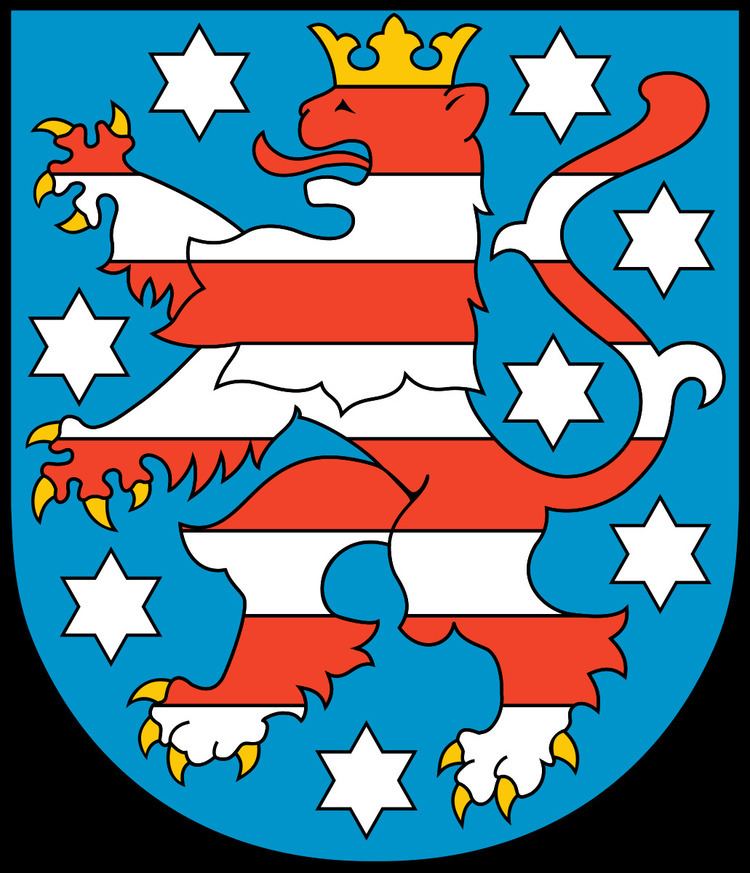Adopted 1990 | ||
 | ||
Escutcheon Azure, a lion rampant barry of eight Gules and Argent, crowned and armed Or, surrounded by eight mullets Argent | ||
The coat of arms German state Thuringia was introduced in 1990. Like the 1949 coat of arms of Hesse it is based on the Ludovingian lion barry, also known as the "lion of Hesse", with the addition of eight mullets.
Contents
Description
The coat of arms can be blazoned Azure, a lion rampant barry of eight Gules and Argent, crowned and armed Or, surrounded by eight mullets Argent. This can be interpreted as a blue field with a lion of eight horizontal red-and-white-stripes, with a gold crown and claws, with eight white/silver stars. Some people believe the stars represent eight historical divisions of the state.
Legal position
It was included in the Gesetz über die Hoheitszeichen (Law on the Regional Emblems) of 30 January 1991, which came into law retrospectively to 3 October 1990. The current law, Verordnung zur Ausführung des Gesetzes über die Hoheitszeichen des Landes prescribed its use, including banning use by third parties, use of the coat of arms on the seal and use of the arms on the State flag.
State of Thuringia (1920 - 1933)
The state of Thuringia was created in 1920 by uniting the seven Thuringian polities: Saxe-Weimar-Eisenach, Saxe-Meiningen, Saxe-Gotha, Saxe-Altenburg, Republic of Reuss (Reuss Elder Line, Reuss Younger Line), Schwarzburg-Sondershausen and Schwarzburg-Rudolstadt. The northern part of today's Thuringia was part of Prussia (Erfurt governorate) and therefore not represented in this coat of arms. Inspired by the American flag (by featuring one star for each of its counties), the shield is gules, seven mullets of six points argent - seven six-pointed stars on a red background. It was used on the state flag of that period. The coat of arms was used until 1933, when the NSDAP government created a new coat of arms.
Landgraves of Thuringia
In 1040, the house of the Ludovingians from Upper Franconia, gained rule over territories in the north of Thuringia, which then were part of the dukedom of Saxony. The following generations of the house gained control of Thuringia and northern Hesse and became counts palatine of Saxony. In 1137 the Margraves became Landgraves, a position comparable to a duke. Now their rule was immediate to the Empire. In 1247 the Ludowingers vanished. Their rule in Thuringia was succeeded by the Saxon house of Wettin. The arms, used by Landgrave Conrad in the 13th century, was azure, a crowned lion rampant barry of eight argent and gules, crown and claws or.
